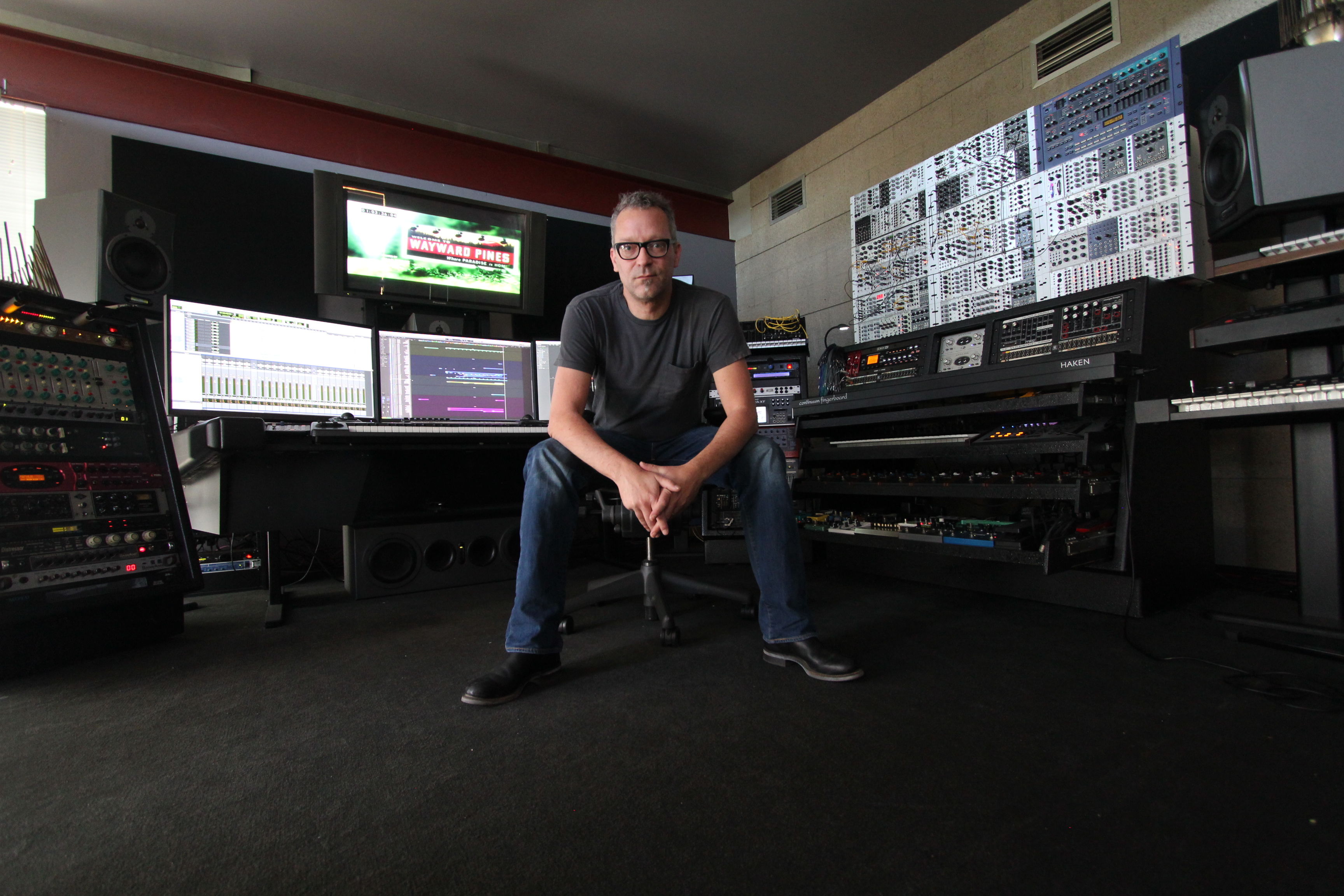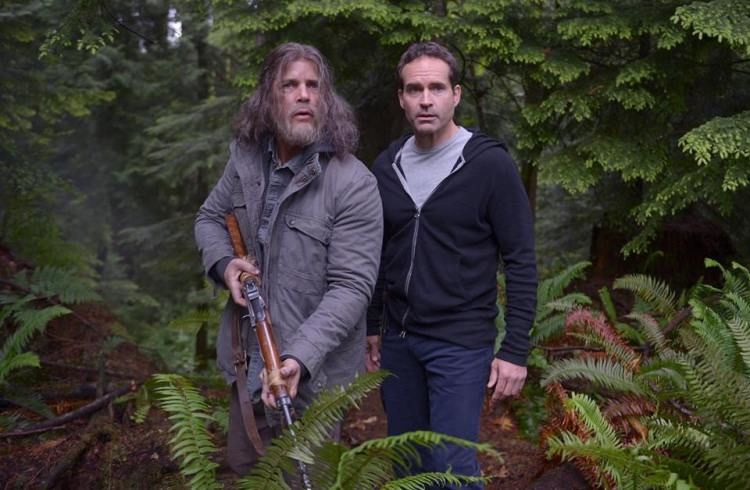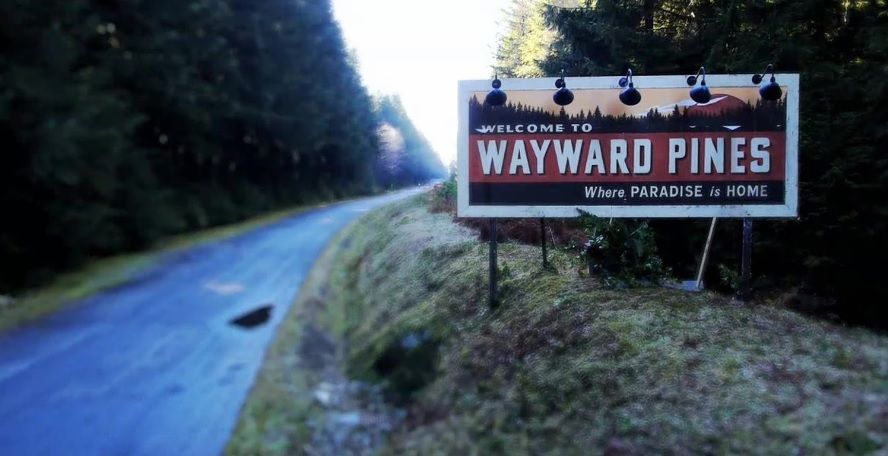Charlie Clouser has been in the music industry for over 20 years now. Beginning with his days as an original member of the band Nine Inch Nails to scoring hit projects such as the Saw franchise, Resident Evil: Extinction, Las Vegas, Numb3rs and Childhood’s End. Currently he is lending his musical expertise to M. Night Shyamalan’s hit show, Wayward Pines airing on Fox. In this interview Charlie talks about everything from the Season 2 finale to his favorite part about scoring the show.

-What do you think audiences will be most surprised about with the finale in a few weeks?
The most surprising thing about this second season of Wayward Pines is how badly things go for the townspeople. There was a lot of carnage in the first season, but this time around things do not go well at all for the humans, and they are forced to take some pretty extreme measures to try to salvage what’s left of their future. I mean, things get pretty desperate by the season finale. The humans kind of run out of options and by the end they really have only one choice left, and it’s not a great one. It’s a wild ride getting them to that point however!
-Musically has this season been more challenging than the first?
Musically, this season has needed a lot more action cues and high-energy stuff. In the first few episodes of season one there was a higher percentage of quiet, creepy, and just plain weird cues as we gradually discovered what was really going on in Wayward Pines, but now that the Abbies have started to get the upper hand I’ve been doing a lot more of those big, bombastic cues. There’s also a lot more music than earlier in the series, with shorter cues as we jump back and forth between different story lines, so the challenge this time around has been maintaining a continuous flow in the score while the energy level has such dramatic peaks and valleys. It swerves from big battle to quiet tension to creepy ambience within the space of a minute, so that can be a little tricky on my end.
-Audiences have definitely seen the Abbies a lot more this season. Have you given them a special theme or sound that is always associated with them?
There’s been a few signature sounds for the Abbies, like a couple of bowed guitar sounds that almost resemble an Abbie screaming, but it’s been more about the musical themes that reinforce them getting smarter and smarter, and seeming less like mutated creatures and more like the next step in human evolution. Some of the music that goes with the Abbie’s story lines has been gradually getting less savage and more like the wheels are turning in their minds, especially with Margaret, who is like the leader of the Abbie clan. There’s been a few scenes with her being held captive in the lab, and she starts figuring things out, so she gets a little bit of the “clever girl” type of feeling to the score on her scenes.

-Wayward Pines is a very small town. What instruments in particular do you use to support this setting?
At the start of the series, I wanted to use a lot of sounds that felt like they were coming from inside Matt Dillon’s character’s brain-injured head, so that meant lots of small, dry sounds like soft guitar feedback, high-frequency tones that came from bowed metal instruments, and those kind of “tinnitus” sounds that feel like the ringing in your ears after a concussion. For the feel of the town in general as the series moved on, I used more of those small instrument sounds like the bowed metal stuff, but added in a bunch of soft tuned percussion sounds like broken marimbas and other “not quite right” tuned percussion things. Not quite as overt as using a toy piano sound, but moving in that direction. Anything that was small and possibly broken, but not electronic or heavily processed. There’s almost no synthesizer sounds anywhere in the score for Wayward Pines except as a pulsing bass throb in some of the more intense scenes, and it has been a bit of a challenge to keep coming up with sounds that are small and intimate but still sound scary or ominous, but it’s been a lot of fun and I’ve learned quite a bit while trying different approaches.
-When you begin scoring each episode what do you do first/where do you start?
At the start of the scoring process for each episode I try to look for the biggest, most important scenes, the ones where strong melodic themes will be required, and once I have those identified and fleshed out a little bit, I can work backwards and see if some of that thematic material can be used in other spots in the episode. If it all works according to plan, I can hint at where a story line is going by sprinkling some of the sounds and melodies from a later, more conclusive scene into earlier parts of the story. This approach isn’t always musically appropriate, but when it is, and provided I can actually make it work, it can be a great musical problem solver.
-What is your favorite part about scoring Wayward Pines?
One of my favorite aspects about scoring Wayward Pines is being able to create a sense of dread and impending doom while using small, light sounds. The obvious ways to musically hint at these emotions, like using big, epic sounds and lots of ominous low tones don’t seem appropriate in many scenes. There’s often a sense of restrained tension in scenes that might have just Theresa and Megan talking, sort of tip-toeing around a heavy subject, and these scenes often needed that sense of dread but it wouldn’t sound right to have big, low tones going on behind their conversation. In so many of these spots I’d have to find a way to induce fear using tiny sounds, and that’s been a challenge at times but when I can get it to work it’s been really satisfying, and I’d like to think I’ve increased my musical and sonic vocabulary quite a bit over the course of this series.

-Who is your favorite character to score for in Season 2 and why?
I was really surprised at the really strong performances from some of the younger actors in season two, just kids really, who play Frank and Lucy. Those two get involved in some pretty creepy story lines and although there wasn’t a ton of material to write for them it was fun to try to reinforce their uneasiness with score, and their strong performances made it a real pleasure to work against. On the opposite end of the spectrum, some of the themes for Theo and Rebecca’s failed relationship were fun to write. While Frank and Lucy’s themes had an element of childlike innocence gone wrong, Theo and Rebecca’s themes had a much more grown-up feel, and an element of their life together before getting dragged into the mess that is life in Wayward Pines, so I tried to bring some sounds and melodic themes from the outside world into their scenes. Some of the instruments and chords I used for them are not found anywhere else in the series, and I’d like to think that this helps to reinforce their sense of being transplanted against their will into the strange world of Wayward Pines.
The Season 2 finale of Wayward Pines airs July 27 on Fox.
Written by rand01 on Jul 21, 2016




No comments yet. Be the first!